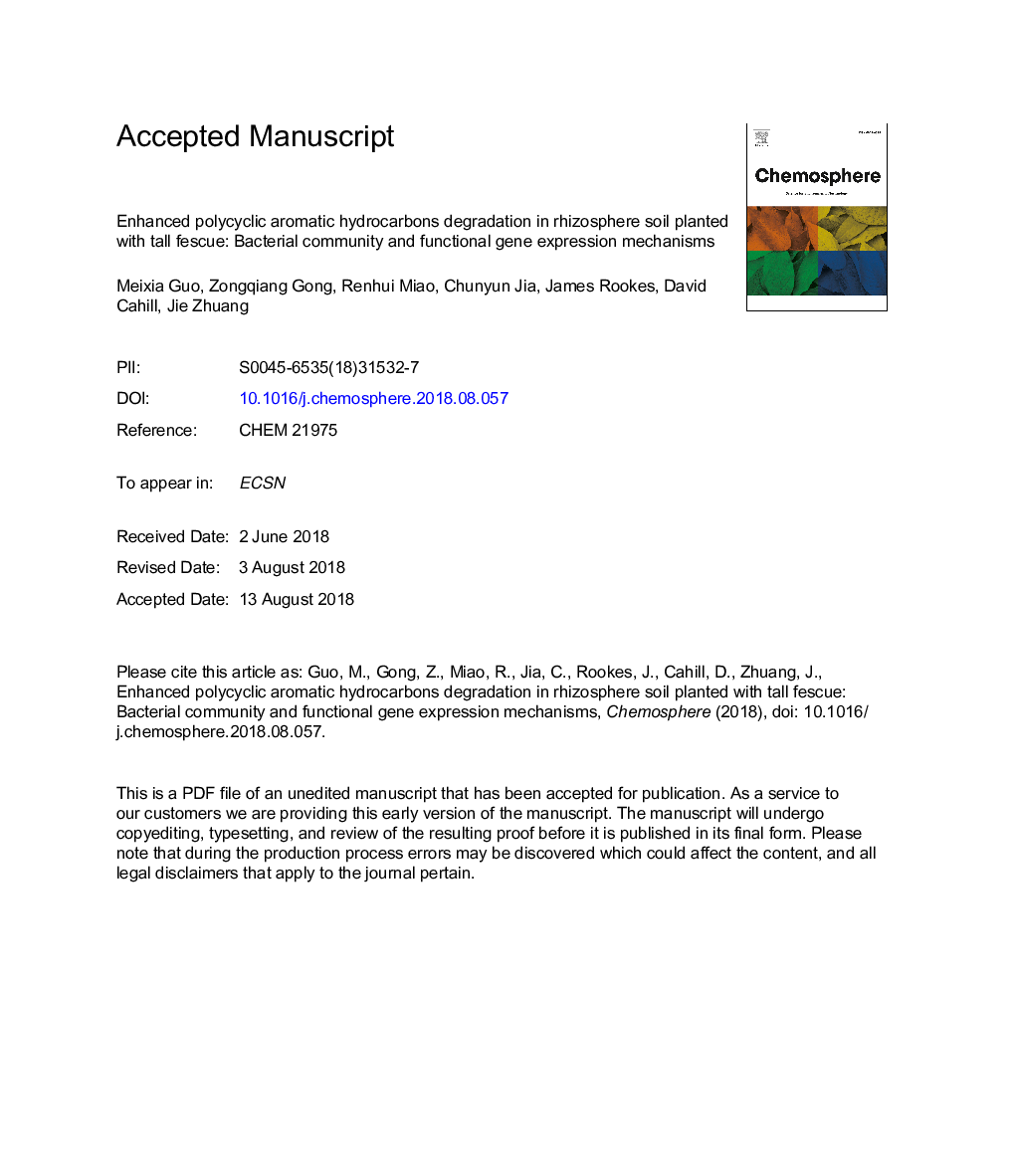| Article ID | Journal | Published Year | Pages | File Type |
|---|---|---|---|---|
| 8946103 | Chemosphere | 2018 | 31 Pages |
Abstract
To investigate the bacterial mechanisms of polycyclic aromatic hydrocarbons (PAHs) degradation in an aged-contaminated agricultural soil planted with tall fescue (Festuca arundinacea), a rhizo-box experiment was carried out for 60â¯d. Shifts in bacterial community structure in the soils during the experiment were performed using denaturing gradient gel electrophoresis. The abundance and activity of total bacteria and PAH-degraders were measured by quantification of 16S rDNA, PAH-ring hydroxylating dioxygenase (PAH-RHDα) genes and their transcripts, respectively. The residual PAH concentrations were monitored using high-performance liquid chromatography analysis. Results showed that the removal percentage of total PAHs in rhizosphere soil was 11% higher than that in unplanted soil. Soil bacteria were dominated by Alphaproteobacteria (48.4%) and Gammaproteobacteria (25.8%). Tall fescue positively affected the abundance and activity of total bacteria in the soil, and stimulated RHDα gram-negative (GN) gene expression while inhibiting RHDα gram-positive gene expression. PAH dissipation in rhizosphere soil could be ascribed to modifications in the bacterial community structure, increase in the abundance of PAH-degraders, and enhancement of the RHDα GN gene expression during the incubation.
Related Topics
Life Sciences
Environmental Science
Environmental Chemistry
Authors
Meixia Guo, Zongqiang Gong, Renhui Miao, Chunyun Jia, James Rookes, David Cahill, Jie Zhuang,
